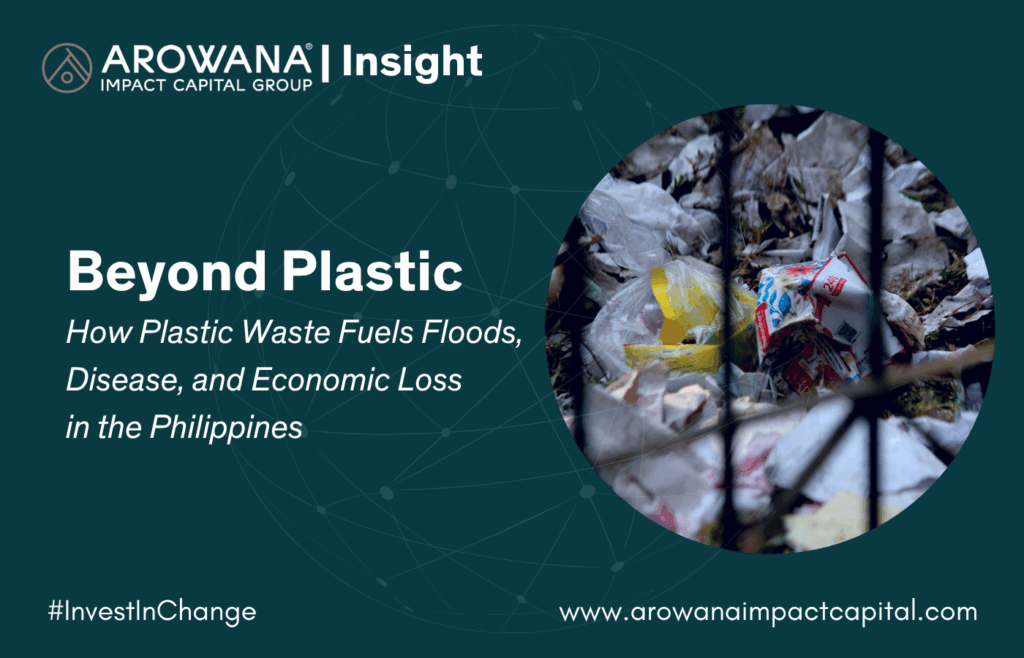Every monsoon season, the Philippines braces for floods. Streets turn into rivers, homes are submerged, and economic activity grinds to a halt. But behind the rising waters lies a less visible culprit: plastic.
From Metro Manila to Cebu and Davao, the country’s drainage systems are routinely overwhelmed—not just by rain, but by the sheer volume of plastic waste clogging canals, creeks, and storm drains. The result is a recurring disaster that’s as much man-made as it is meteorological.
Join us as we explore the direct correlation between plastic waste and flooding in the Philippines, examining the systemic causes, economic costs, health risks, and policy failures that perpetuate this crisis.
Let us try to outline the different strategic opportunities for business leaders, investors, and policymakers to turn the tide—literally and figuratively—on one of Southeast Asia’s most pressing environmental challenges.
The Anatomy of a Flood: How Plastic Blocks the Flow
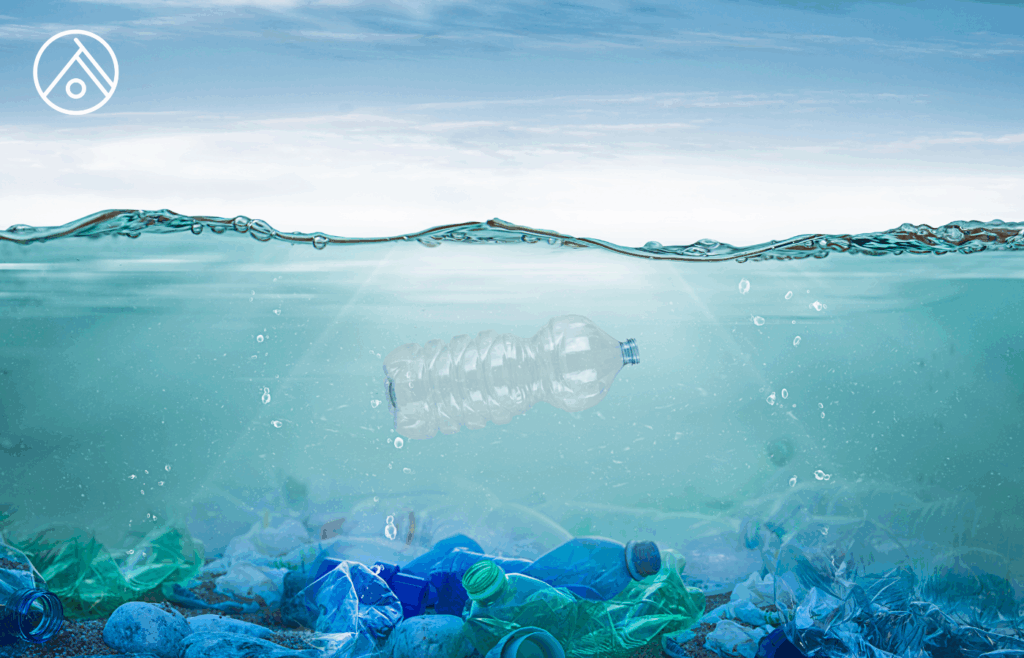
Flooding in the Philippines is not just a climate issue—it’s a waste management issue. Here’s how plastic waste turns rainfall into disaster:
1. Clogged Drainage Infrastructure
Single-use plastics—sachets, bags, cups, bottles—are routinely discarded in streets, creeks, and canals. During storms, these lightweight materials are swept into drainage systems, where they accumulate and block water flow.
- Result: Even moderate rainfall can trigger severe flooding, as stormwater has nowhere to go.
- Example: In Metro Manila, clean-up crews regularly retrieve truckloads of plastic from storm drains after floods.
2. Obstructed Waterways
Plastic waste dumped directly into rivers and creeks forms dense mats that act like artificial dams. These blockages slow water flow, raise upstream water levels, and reduce the capacity of waterways to handle runoff.
- Result: Urban rivers like the Pasig become chokepoints, unable to drain floodwaters efficiently.
- Example: Talayan Creek in Quezon City often appears “walkable” due to the thickness of plastic waste.
3. Downstream Transport and Marine Pollution
Storms mobilise plastic waste from upland areas, sweeping it downstream into major rivers and eventually out to sea. The Philippines is now the world’s top source of riverine plastic pollution.
- Result: Manila Bay and coastal ecosystems are inundated with plastic debris, damaging coral reefs and fisheries.
- Example: Post-storm beach cleanups reveal tons of plastic waste deposited by floodwaters.
The Economic Toll: Floods, Waste, and Lost Productivity
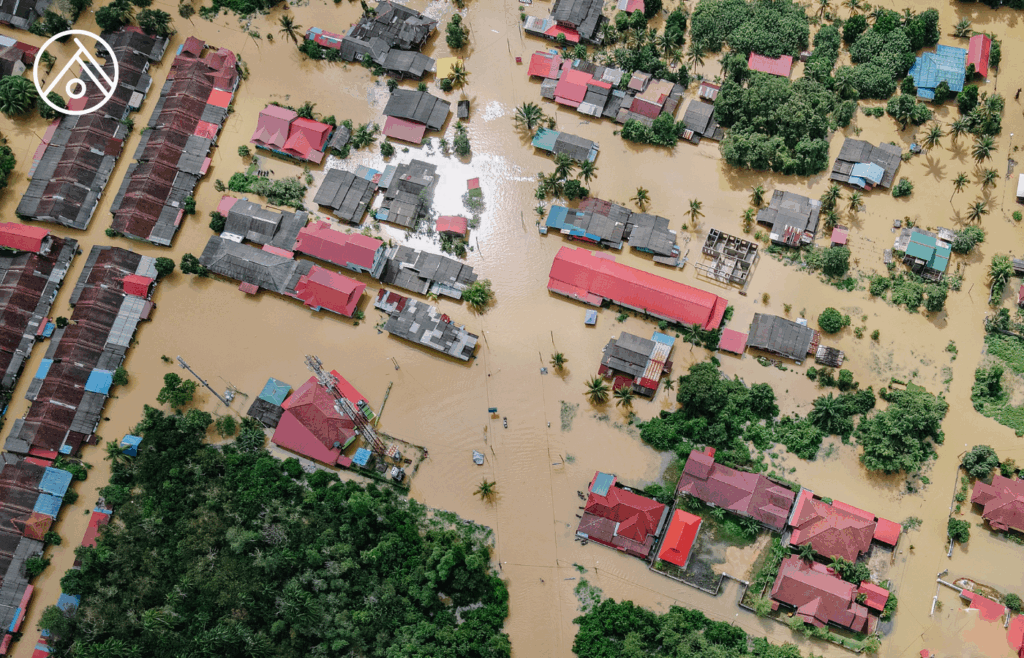
Flooding caused by plastic waste isn’t just an environmental issue—it’s an economic one. The costs ripple across sectors:
1. Infrastructure Damage
Blocked drainage systems lead to waterlogged roads, damaged buildings, and overwhelmed sewage systems. Repair costs run into billions annually.
- Impact: Local governments divert funds from development to disaster response.
- Investor Insight: Infrastructure resilience is now a key metric in ESG risk assessments.
2. Business Disruption
Floods halt transportation, close retail outlets, and disrupt supply chains. SMEs are particularly vulnerable, with limited capacity to absorb losses.
- Impact: Reduced productivity, lost revenue, and increased insurance claims.
- Investor Insight: Climate-linked waste risks are becoming material to portfolio performance.
3. Public Health Costs
Floodwaters contaminated with plastic and other waste become breeding grounds for disease. Hospitals see spikes in waterborne illnesses post-flood.
- Impact: Increased healthcare costs and reduced workforce availability.
- Policy Insight: Health systems must integrate environmental risk into disaster planning.
The Sachet Economy: A System Built to Fail
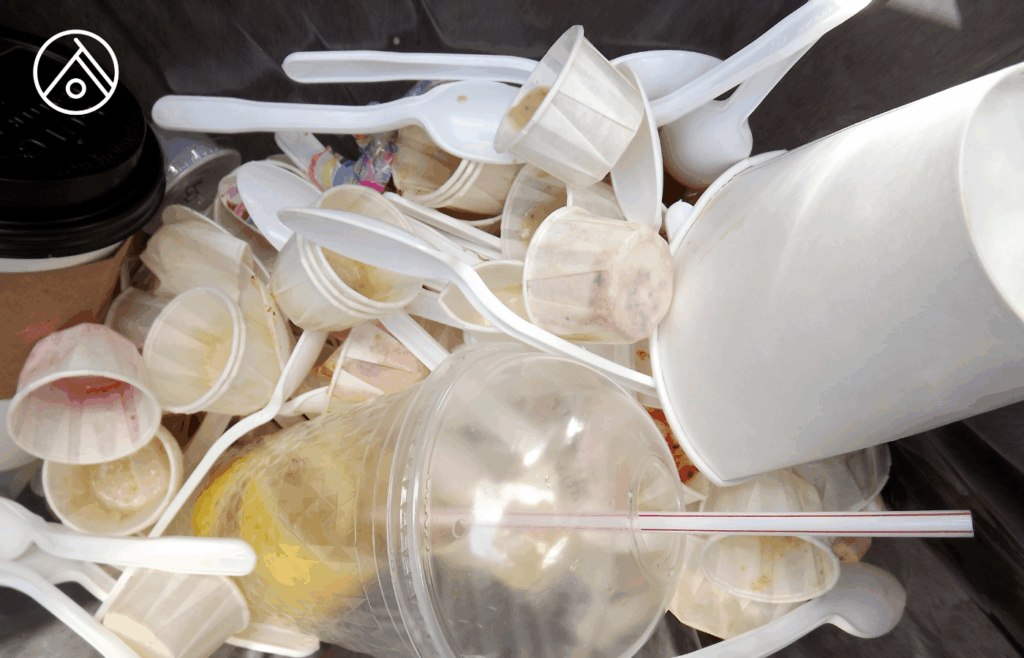
The Philippines uses over 160 million sachets every day—most are non-recyclable and end up clogging rivers and drains. This dependence on single-use packaging is a major driver of the country’s plastic pollution and flooding crisis.
Why Sachets Dominate
- Affordability: Sachets allow low-income consumers to buy products in small quantities.
- Distribution: Brands use sachets to penetrate rural and urban markets with minimal logistics.
- Marketing: Sachets are easy to brand and promote, especially in fast-moving consumer goods.
Why They Persist
- Lack of Recycling Infrastructure: Most sachets are made of multi-layered plastics that are difficult to recycle.
- Weak Waste Collection Systems: Informal settlements often lack regular garbage pickup.
- Cultural Normalisation: Daily use of sachets is deeply embedded in consumer habits.
Health Hazards: The Hidden Cost of Plastic Waste
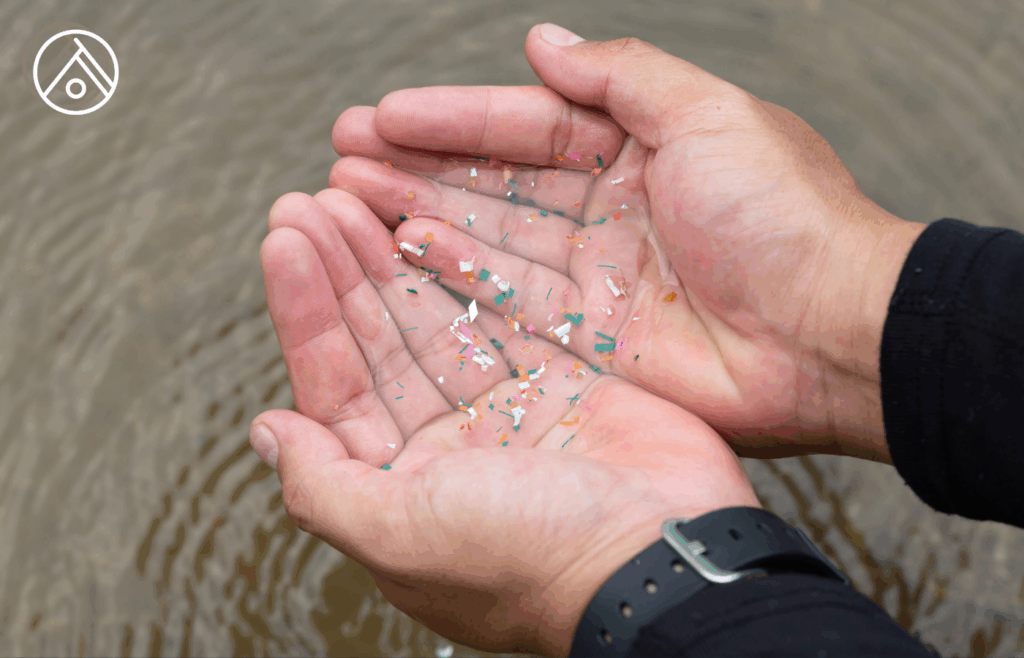
Plastic pollution in the Philippines is toxic, not just unsightly. It harms human health through contaminated water, food, air, and constant exposure to hazardous waste.
1.. Chemical Leaching and Poisoning
Plastics leach harmful chemicals like phthalates and BPA into soil and water. These toxins contaminate food and drinking water, causing endocrine disruption, poisoning, and links to diseases like heart disease and cancer.
- Burning plastics releases toxic fumes, increasing respiratory illnesses and cancer risks in communities near dumpsites.
2. Microplastics in Food, Water, and Air
As plastics degrade, they break into microplastics that enter the food chain via seafood, drinking water, and even air.
- Impact: Filipinos consuming contaminated fish are exposed to unknown long-term health risks.
- Scientific Concern: Microplastics may cause inflammation and organ damage.
3. Direct Ingestion and Physical Injury
Marine life often mistakes plastic for food. Humans consuming contaminated seafood ingest microplastics and associated toxins.
- Impact: Digestive blockages, toxin accumulation, and potential long-term health effects.
4. Disease Outbreaks from Flooding
Floodwaters mixed with plastic waste become breeding grounds for mosquitoes and bacteria.
- Result: Increased cases of dengue, leptospirosis, and other waterborne diseases.
5. Disrupted Livelihoods and Social Inequity
Plastic pollution harms fisheries and tourism, reducing income for vulnerable communities. Marginalised groups near polluted areas suffer the most.
- Impact: Economic instability, health disparities, and reduced quality of life.
Chronic Aftermath: The Long Shadow of Plastic Waste
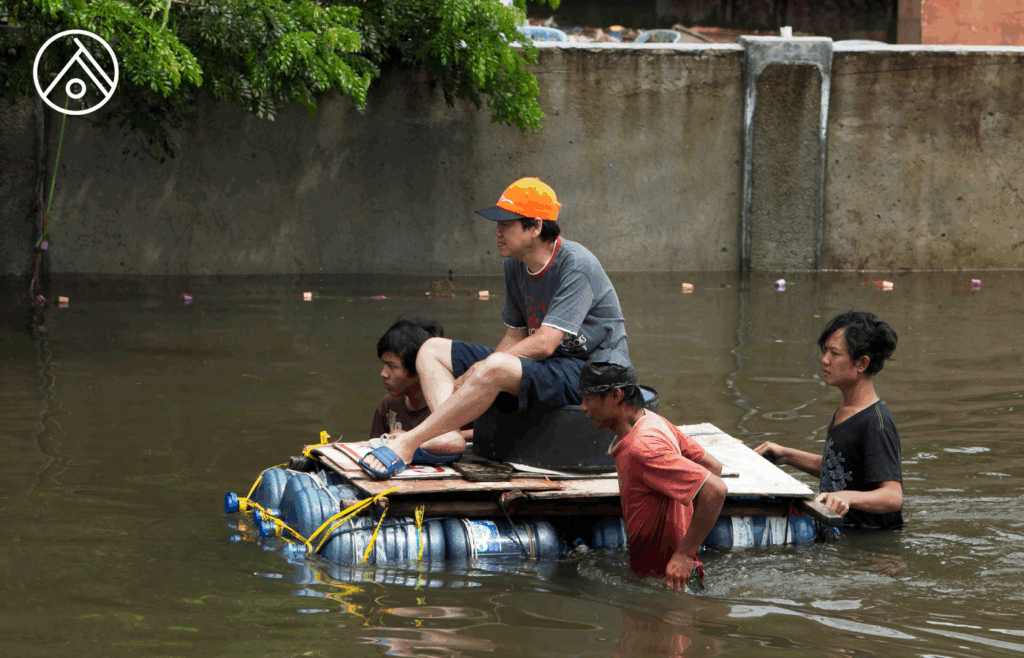
Plastic pollution leaves behind persistent, visible damage across the Philippines:
1. Constant Litter
Plastic debris blankets beaches, rivers, and urban streets. Surveys show plastic waste at nearly every sampled site nationwide.
- Impact: Environmental degradation and loss of public trust in waste systems.
2. Regular Flooding and Cleanup Burdens
Blocked drains cause frequent flooding. After the waters recede, plastic waste remains, requiring costly and labor-intensive cleanup.
- Impact: Strained municipal budgets and exhausted communities.
3. Tourism and Economic Losses
Boracay’s six-month closure due to pollution cost an estimated $360–400 million and 36,000 jobs.
- Impact: Damaged reputation, lost revenue, and disrupted livelihoods.
4. Environmental and Livelihood Harm
Plastic disrupts ecosystems and reduces fish yields. Fisherfolk report catching “more plastic than fish.”
- Impact: Food insecurity and long-term ecological damage.
5. Burden on Local Governments
Cleanup operations are constant and costly. Without systemic change, local efforts remain overwhelmed.
- Impact: Governance fatigue and limited progress.
Strategic Solutions: Turning Waste into Opportunity

Solving the plastic-flood nexus requires coordinated action across sectors. Here’s what works—and what’s next:
1. Redesigning Products and Packaging
Brands must shift from single-use to reusable or recyclable formats. Innovations in biodegradable materials and refill systems are gaining traction.
- Case Study: Some local manufacturers have started piloting refill stations and compostable sachets.
- Investor Insight: Packaging innovation is a growth area in sustainable consumer goods.
2. Building Circular Infrastructure
Cities need systems that recover, reuse, and recycle plastic before it reaches waterways.
- Case Study: San Fernando, Pampanga, has achieved over 80% waste diversion through community-based segregation.
- Policy Insight: Decentralised waste systems can outperform centralized models in dense urban areas.
3. Leveraging Data and Technology
AI and satellite mapping can identify flood-prone areas and track waste movement. Blockchain can verify EPR compliance.
- Case Study: River rangers in Pasig use mobile apps to log waste collection and monitor hotspots.
- Investor Insight: Tech-enabled waste management is a frontier for impact investing.
A Watershed Moment for Action in the Philippines
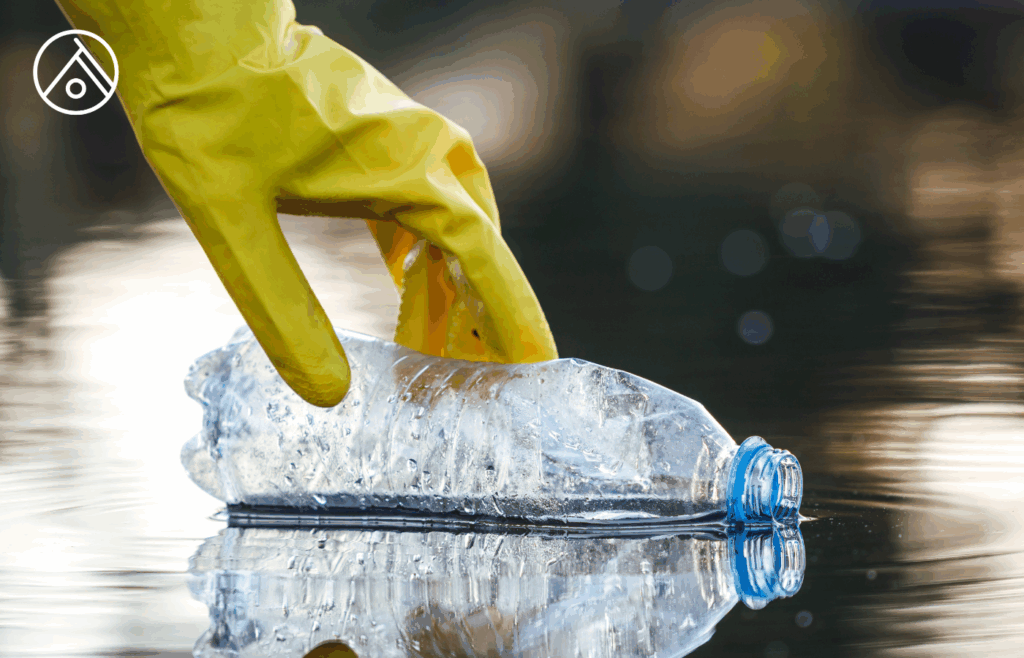
The link between plastic and flooding is clear, especially for Filipinos. Every storm becomes a stress test for infrastructure, governance, and community resilience—and plastic waste consistently tips the balance toward disaster.
For business leaders, this is a call to rethink product design, packaging choices, and supply chain accountability. The sachet economy may offer short-term market access, but it carries long-term reputational and regulatory risks. Companies that invest in circular models and sustainable packaging will not only reduce environmental harm but also build trust with increasingly conscious consumers and investors.
For policymakers, the challenge is to move beyond fragmented clean-up efforts and toward systemic reform. That means enforcing Extended Producer Responsibility, investing in decentralised waste infrastructure, and integrating environmental health into urban planning and disaster response. It also means empowering communities—especially those most affected—to participate in and benefit from the solutions.
And for investors, the message is clear: plastic waste is a material risk. It affects infrastructure, public health, tourism, and food security. But it’s also a material opportunity. Technologies that track, recover, and redesign plastic use are ripe for investment. Cities and companies that lead on waste resilience will be better positioned to weather climate shocks and regulatory shifts.
The next flood isn’t a question of if—it’s when. The Philippines faces a choice: continue down a path of clogged drains, plastic-filled rivers, and repeated disaster, or invest in systems that resist, recover, and rebuild. This isn’t just about cleaning up trash. It’s about breaking the cycle of waste and shaping a future that can survive its habits.
For more news and insights, stay tuned to the AIC website.

